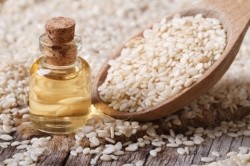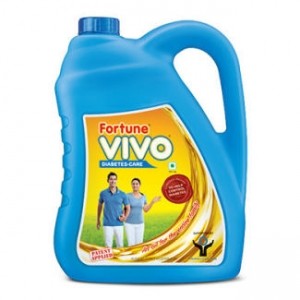Sesame and rice bran oil blend lowers hyperglycaemia and improves lipids, study finds

Previous studies have discovered a link between sesame and rice bran oil and lowering blood pressure and improving cholesterol.
Further expanding on existing literature of the oils’ benefits, a team of researchers conducted a trial to see how the oil blend may benefit patients with type 2 diabetes mellitus—a condition which could lead to cardiovascular diseases that the researchers said is on the increase and is estimated that there will be 366 million cases by 2030.
“Epidemiological studies have indicated that the replacement of foods high in saturated fatty acids with food sources of mono- and polyunsaturated fatty acids could be favorable in the prevention and progression of diabetes development,” the study said.
Rice bran oil, which is extracted from the inner husk of rice bran, is rich in monounsaturated fatty acids and has been researched for its antidiabetic and cholesterol-lowering effects.
For this study,published in The American Journal of Medicine, the researchers mixed it with cold pressed, unrefined, antioxidants- and lignans-rich sesame oil to investigate its relative effects on hyperglycemia and lipid profile in individuals with type 2 diabetes mellitus, as the researchers hypothesized that an oil blend “may elicit different effects from what they reflect individually as cooking oil.”
The study participants
A total of 400 men and women in India participated in the study. There were 300 of them newly diagnosed with type 2 diabetes mellitus. An additional 100 participants of both genders were normoglycemic, which means having the normal amount of glucose in the blood.
The participants were required to have no evidence of cardiovascular or liver disease, no usage of antidiabetic or cholesterol-lowering medication, and no adherence to a prescribed diet, among other things.
The participants were divided into four groups: normoglycemic subjects with the oil blend; Type 2 diabetes mellitus patients with the oil blend; Type 2 diabetes mellitus patients with Glibenclamide (an antidiabetic drug, 5 mg a day), and Type 2 diabetes mellitus patients with the oil blend in combination with Glibenclamide.

The sesame and rice bran oil blend (Vivo) was supplied by Adani Wilmar Limited, and given to the respective groups at 2-week intervals for a maximum of 4-5 liters, and participants in these groups were instructed to use it as the only cooking oil for 8 weeks, recommended below 35-40 ml a day. A questionnaire given at the beginning of the study found that prior, participants used mustard oil, palm oil, sunflower oil, and soybean oil at random.
Significant changes in the oil blend groups
According to the researchers, all participants went through the whole study and none was classified as noncompliant. Using anthropometric and biochemical determinations, no significant differences were observed at baseline values for body weight, weight to height ratio, and body mass index among type 2 diabetes mellitus patients.
At weeks 4 and 8, groups with type 2 diabetes mellitus patients treated with sesame oil blend showed significant reduction of fasting and postprandial blood glucose, a trend not significant among normoglycemic subjects.
The researchers also found that serum levels of total cholesterol, triglycerides, low-density lipoprotein cholesterol, and non-high-density lipoprotein cholesterol, were lowered significantly for the diabetic group using the oil blend.
“The highest reduction in fasting and postprandial blood glucose was noted [in] type 2 diabetes mellitus patients treated with a combination of glibenclamide and sesame oil blend, compared with the glibenclamide-alone-treated group,” they wrote.
Outcomes
“We found that using antioxidants and an unsaturated fatty acids-rich blend of 20% cold-pressed unrefined sesame oil and 80% physically refined rice bran oil as cooking oil for 8 weeks lowered hyperglycemia and improved the lipid profile,” the researchers concluded.
The changes they noted came from an increase of enzymatic and nonenzymatic antioxidants in diabetic hypertensives as well as patients with type 2 diabetes mellitus, caused by the lignin sesamin in sesame oil.
Moreover, the outcome reflected what was observed in several rat studies, where rice bran oil reduced the oxidative stress and improved lipid abnormalities thanks to the oil’s most prominent component, y-Oryzanol.
Researcher said that not having a placebo control group was a limitation in the study. Another limitation was that the amount of oil used was not monitored during the study. The participants also weren’t diverse (an urbanized Indian population) “possibly limiting the generalizability of these findings to other socioeconomic or ethnic groups,” they wrote.
Nevertheless, the oil blend suggested beneficial effects on glycemic control and lipids in patients with type 2 diabetes, which the researchers said “could beof clinical relevance for the development of prevention strategies in the population at risk for type 2 diabetes mellitus and future cardiovascular risk.”
Source: The American Journal of Medicine
Published online, doi:10.1016/j.amjmed.2016.02.044
A Blend of Sesame and Rice Bran Oils Lowers Hyperglycemia and Improves the Lipids
Authors: S. Devarajan, et al.

















